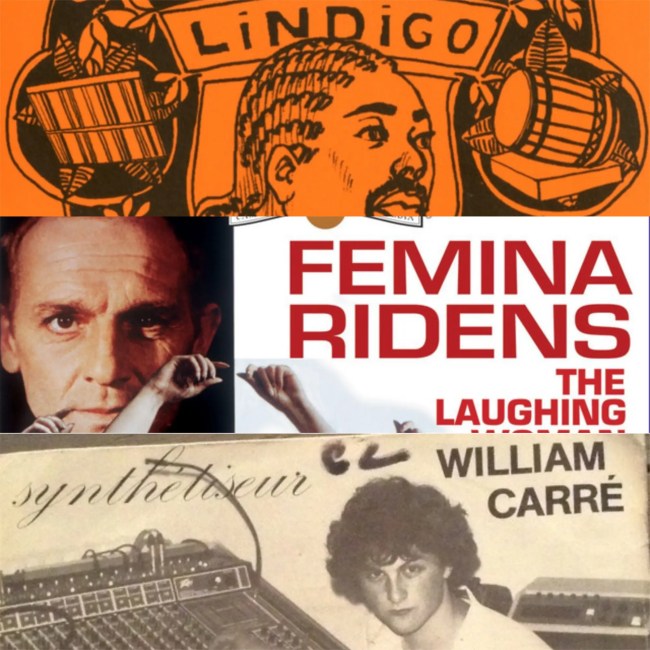Support real, independent music journalism by subscribing to Passion of the Weiss on Patreon.
Evan Nabavian‘s YouTube algorithm is chaotic good.
Such is the power of maloya that it has drawn the censure of slave masters, the Catholic church, and the French government. Frank Tenaille writes in Music is the weapon of the future, “The spirit of maloya is situated somewhere between nostalgia and hope, blues and anger, stolen humanity and possible happiness.”
Maloya is the traditional music of Reunion, an overseas department of France that sits 420 miles east of Madagascar in the Indian ocean. Reunion was first settled by the French in the 17th century whereupon they imported slaves from Africa and later indentured workers from Southeast Asia and India to work on coffee and sugar plantations. Amidst this confluence of cultures, the blacks created maloya, with which they honored their ancestors and sang of the pain of slavery, sometimes in secret from their disapproving masters. In its traditional form, the music consists of drums, singing, and little else.
By the 20th century, maloya had taken on new meaning as a symbol of Reunionese culture and identity. As such it was co-opted by the local communist party who sought autonomy from France – the PCR (Parti Communiste Reunnionais) pressed the first maloya records and heralded the music in their newspaper. The Catholic clergy viewed maloya as subversive and the French authorities intermittently banned it until 1981 when it was legalized by France’s newly elected socialist president. Today it is part of the island’s cultural inheritance alongside Reunion’s local creole language.
“Tangaty” is a 2011 track by the group Lindigo which finds lead singer Olivier Araste reaching across generations over the pounding of a rouler (a barrel-shaped tubular drum), the rattle of a kayamb (an idiophone), and the thrum of a one-string bobre that is ever-increasing in intensity. Araste does not mourn or air grievances. The past is not a burden to carry, but a foundation on which to build.
Composer Stelvio Cipriani is best known for his score for Anonimo Veneziano (1970), a weepy love story set against the charms of Venice where the score is florid and romantic like the signature works of Cipriani’s French peers Francis Lai and Michel Legrand. Ray Charles once asked Cipriani to play the theme song for him; Charles then played a jazz interpretation of it for Cipriani. In a 2013 interview, Cipriani said romantic soundtracks were his favorites.
And yet Cipriani had no qualms about working on the pulpier fare that was coming out of Italy. Before and after he received his accolades for Anonimo Veneziano, he scored the grisliest and most perverse B movies Italy had to offer. Cipriani’s name is on Solamente nero (1978), a giallo about a serial killer; Tentacoli (1977), a monster movie featuring a mutant octopus; Incubo sulla città contaminata (1980), an atomic zombie bloodbath; and Papaya dei Caraibi (1978), a sexploitation flick with more than a dash of cannibalism.
Of this ilk is Femina Ridens (1969) in which a wealthy philanthropist with a hidden taste for sadism turns his attention to a feminist journalist who gradually subverts him. Letterboxd reviews laud its tonal shifts, pop art flair, kinky sex, and dazzling score. On the latter, the unduly elegant “Mary’s Theme” gets most of the plaudits – it’s been sampled by Evidence, J.U.S. of Bruiser Brigade, and Curren$y (twice) – but the soundtrack’s finest moment is “Chorus And Brass ‘Fugato’” for a scene where the female lead teases her tormentor. It’s energetic in a way that movie scores typically aren’t and it meshes jazz with Cipriani’s distinct flourishes, namely the choral section (Alessandro Alessandroni’s) and the wordless singing of Edda Dell’Orso. “Mary’s Theme” is Cipriani the romantic. “Chorus And Brass ‘Fugato’” is Cipriani the chameleon; in this instance, he gives expression to the movie’s twisted sexual appetite without accommodating any cliches.
“Vibrations” is a 1982 b-side to an anodyne synthesizer pop instrumental by an electronic musician who is identified only by the boyish, no-nonsense glare he gives on his sole record’s artwork. Nested between a synthesizer and a mixing board, William Carré blasts out a violent digital convulsion. His synthesizer wails and stutters like the spawn of an illicit laboratory experiment. Its pulsating energy defies form and threatens to rend spacetime into a trillion strobes and technicolor fractals. Resolutely mechanical drums struggle in vain to tether it to Earth. Carré’s monster has some 3,000 views across its various YouTube uploads. This is fitting for a record by an obscure artist on a defunct record label, but insufficient for something as arresting as “Vibrations.”


